Occupational Safety Training for Operating Fuel Pumps
99,000 ₫
Note: The price above is calculated per person and may fluctuate depending on the number of participants in the course and market conditions. For more accurate pricing support, please refer to the price list or contact our consulting staff directly.
Occupational safety is an important issue when operating a fuel dispenser and must be addressed promptly to ensure the health and safety of workers and enhance the reputation of businesses here. The Occupational Safety Training course is one of the effective solutions to raise awareness of how to prevent workplace accidents for workers operating a fuel dispenser.
Table of Contents
Toggle1. Overview of Petrol Pump Head
a. What is a Petrol Pump Head?
A petrol pump head, also known as a Petrol Pump Head, is an essential part of the fuel dispensing system. It is typically located at the top of the pump and contains various necessary components such as valves, flow meters, and sensors. The pump head helps control the process of transferring fuel from the storage tank to vehicles or fuel containers, while providing information about flow rate and pressure.

b. How a Petrol Pump Head Works
The operation of a petrol pump head is closely related to the process of pumping and distributing fuel from the storage tank to vehicles or fuel containers. Here is a basic outline of its working principle:
- Suction and Pumping:
- The fuel pump uses a submerged or tank-mounted pump system to draw fuel.
- Energy from the pump is transmitted to the petrol pump head through pipes.
- Valves and Sensors:
- The pump head contains various valves to control the fuel flow.
- Sensors measure pressure and flow to ensure proper operation.
- Electronic Control:
- An electronic control system may adjust the fuel flow according to vehicle requirements and operating conditions.
- Overflow Protection:
- The pump head usually has anti-overflow features to prevent fuel leakage when the pump is idle.
- Distribution:
- Fuel is pumped from the head through hoses to the vehicle’s fuel tank or fuel system.
- Sensor Control:
- Sensors on the pump head monitor flow and pressure, transmitting this information to the vehicle’s control system.

c. Industries Using Petrol Pump Heads
Petrol pump heads are commonly used in the oil and fuel industries. They are installed at gas stations and fuel supply points for road vehicles. In the energy sector, they play a crucial role in distributing and delivering fuel from storage tanks to cars, motorcycles, and other vehicles.
Specifically, high-capacity gas stations and fuel depots use petrol pump heads to manage and control fuel delivery to large numbers of vehicles.
2. Overview of Safety Training for Operating Petrol Pump Heads
a. What is Occupational Safety Training?
- Occupational safety training for operating Petrol Pump Heads consists of sessions that equip workers with knowledge to prevent workplace accidents. Workers who directly operate petrol pump heads are classified under Group 3.
- The training course helps workers recognize and avoid hazards, reducing the risk of workplace accidents.
REGISTER FOR OCCUPATIONAL SAFETY TRAINING
b. Training Duration
Initial safety training:
- Total training time is at least 24 hours, including assessment time.
- 8 hours of theory on policies and laws regarding occupational safety and hygiene
- 8 hours of basic occupational safety and hygiene knowledge
- 4 hours of specialized training theory
- 2 hours of practical training on specialized content
- 2 hours of final theory assessment
The training center schedules sessions depending on workers’ availability, usually in 6 sessions over 3 days, assuming continuous attendance is possible.
Periodic safety training:
- Before the occupational safety card expires, workers must undergo periodic safety training, with periodic training duration of at least 50% of the initial training time.
Explanation: The total periodic safety training time is at least 12 hours, including assessment. After completing the course and passing the test, workers are reissued and extended their occupational safety card.
c. Training Content
| No. | TRAINING CONTENT | TRAINING DURATION (HOURS) | |||
| Total | Including | ||||
| Theory | Practice | Assessment | |||
| I | Policies and Laws on Occupational Safety and Hygiene | 8 | 8 | 0 | 0 |
| 1 | Overview of legal documents related to occupational safety and hygiene. | 6 | 6 | ||
| 2 | Standards and technical regulations on occupational safety and hygiene. | 1 | 1 | ||
| 3 | Specific regulations from state authorities on safety and hygiene during construction, expansion, or modification of facilities, and the use, storage, and inspection of machinery, equipment, and hazardous materials. | 1 | 1 | ||
| II | Basic Occupational Safety and Hygiene Knowledge | 8 | 8 | 0 | 0 |
| 1 | Basic knowledge of workplace hazards and harmful factors. | 4 | 4 | ||
| 2 | Methods for improving working conditions. | 1 | 1 | ||
| 3 | Safety culture in production and business. | 1 | 1 | ||
| 4 | Rights and obligations of employers and employees; safety and hygiene policies; roles of safety officers. | 1 | 1 | ||
| 5 | Occupational safety regulations, signs, safety devices, personal protective equipment; first aid and prevention of occupational diseases. | 1 | 1 | ||
| III | Specialized Training Content | 6 | 4 | 2 | 0 |
| Comprehensive knowledge of machinery, equipment, and hazardous materials; risk assessment and management; safe working procedures for machines and hazardous substances. | 6 | 4 | 2 | ||
| IV | Final Assessment of Safety Training | 2 | 2 | 0 | 0 |
| Total | 24 | 22 | 2 | ||
See more training content of all 6 groups
d. Occupational Safety Card
After completing the safety training course and passing the assessment, workers are issued an Occupational Safety Card (commonly referred to as Group 3 Safety Certificate).
The Group 3 card displays personal details such as name, date of birth, job role, and specific working environment, along with training duration, official stamp, and signature confirming course completion.
According to Clause 2 of Article 24 of Decree 44/2016/ND-CP, there are two cases:
- If the employer and employee have a labor contract, the employer must sign and stamp the safety card for Group 3 workers after completing the training and passing the assessment.
- If the worker is freelance or seasonal with no labor contract, the training provider must sign and stamp the card after the worker completes the training and passes the assessment.

3. Hazards When Operating Fuel Pumps
Operating fuel pumps unsafely can cause various hazards, including:
- Fire and Explosion:
- Fuel is flammable, and leaks or loss of control during pumping can result in fire or explosion.
- Environmental Pollution:
- Fuel leaks can pollute the environment, affecting soil and water sources.
- Health Safety:
- Exposure to fuel can be harmful to human health. Everyone must follow hygiene and safety rules when working near fuel pumps.
- Fire Hazards:
- Technical errors or malfunctions in the pump can lead to fires.
- System Malfunctions:
- Power outages, sensor failures, valve or pump malfunctions can cause unexpected problems during operation.
- Ineffective Overflow Prevention:
- If the overflow prevention system does not function properly, fuel leaks may occur, increasing the risk of fire and environmental pollution.
- Fueling Safety Issues:
- During refueling, if the pump system malfunctions, issues such as continuous pumping may cause fuel spillage and risk of fire or explosion.
To minimize hazards, it is important to perform regular maintenance, conduct safety inspections, and comply with safety rules when operating fuel pumps.

4. Measures to Prevent Workplace Accidents When Operating Fuel Pumps
To control workplace accidents while operating fuel pumps, there are important safety measures that managers and employees should follow:
- Training and Guidance:
- All staff involved in pump operation must be trained in occupational safety and work procedures.
- Personal Protective Equipment (PPE):
- Provide and ensure proper use of protective equipment, including safety glasses, helmets, gloves, and fire-resistant clothing.
- Regular Inspections:
- Conduct regular inspections and maintenance of fuel pumps to ensure proper operation and reduce fire risks.
- Overflow Prevention System:
- Ensure the pump’s overflow prevention system works correctly to prevent fuel leaks.
- Safety Signage:
- Place safety signs in key locations to alert staff to hazards and safety rules.
- Firefighting Water Supply Management:
- Ensure sufficient firefighting water near pumps and have backup water sources available.
- Safe Fueling Procedures:
- Guide staff on safe fueling procedures and ensure automatic shut-off devices stop the pump when the tank is full.
- Electrical and Fire Hazard Control:
- Implement measures to control electrical and fire hazards during operation.
- Safety and Evacuation Plans:
- Develop emergency safety and evacuation plans and ensure all staff know how to execute them.
- Compliance with Legal Regulations:
- Follow all safety regulations and legal rules related to energy and occupational safety.
- Periodic inspection of fuel pumps to detect early safety issues such as mechanical wear or malfunctions, thereby reducing workplace accident risks.
5. Benefits of Occupational Safety Training
An Toàn Nam Việt provides businesses with the following benefits upon completing occupational safety training courses according to Decree 44/2016/ND-CP on Occupational Safety and Hygiene:
- Workers can identify potential hazards and take preventive measures to avoid workplace accidents.
- Businesses can establish risk prevention measures in production, operation, and maintenance processes.
- Reduce costs associated with workplace safety risks.
- Uninterrupted production increases labor productivity and product quality.
- Ensure compliance with occupational safety laws and avoid legal risks.
- Enhance corporate credibility and professionalism, strengthening the company’s brand.
Nam Việt’s training programs help individuals prevent external risks that could cause injury or even death.
REGISTER FOR OCCUPATIONAL SAFETY TRAINING SERVICE
6. Customer Feedback After Completing Training
An Toàn Nam Việt has years of experience supporting businesses in Vietnam, particularly in southern provinces. This responsibility is invaluable to Nam Việt, which is why our Occupational Safety Training is increasingly professional. The company’s growth is driven by positive feedback and suggestions from our clients. Below are testimonials from our partners.
See more customer interviews after using our services at An Toàn Nam Việt
7. An Toàn Nam Việt’s Occupational Safety Training Capability
An Toàn Nam Việt is a reputable and quality occupational safety training center in Vietnam, conducting continuous training at factories, production sites, and construction sites nationwide (all 63 provinces).
REGISTER FOR OCCUPATIONAL SAFETY TRAINING SERVICE
Occupational Safety Training License
- An Toàn Nam Việt has been inspected and certified by the Department of Safety under the Ministry of Labor, Invalids, and Social Affairs to conduct occupational safety and hygiene training. This strengthens our training capability.

Training Materials and Lectures
- Training materials are reviewed and approved to ensure accurate knowledge and practical effectiveness.
- Teaching methods follow An Toàn Nam Việt’s standards, researched and refined by experts to maximize knowledge absorption.
Facilities
- Controlling classroom factors enhances teaching performance and student comprehension.
- Our training facilities provide spacious classrooms meeting standards for size, lighting, and training equipment.
8. Nationally Reputable Occupational Safety Training Center
At An Toàn Nam Việt, we prioritize occupational safety training. We ensure careful preparation of tools, teaching materials, audio, and lighting for effective learning. Our instructors are experts with years of experience, including research on hazard identification and prevention in all industries. Lessons are practical and engaging, following Decree 44/2016/ND-CP, enabling workers to learn protection measures and apply them effectively.
Our training center offers:
- Competitive training costs without compromising quality.
- Flexible schedules matching company production.
- Fast, compliant certification procedures.
- Experienced instructors.
- Classrooms optimized for learning efficiency.
- Lessons tailored to corporate safety needs.
- Dedicated, professional support for clients.

9. Additional Occupational Safety Training Materials
10. Occupational Safety Training Activities
- VAN PHONG FUEL WAREHOUSE JOINT VENTURE COMPANY LTD.
- PETEC VINH LONG SINGLE-MEMBER FUEL WAREHOUSE COMPANY LTD.
1 review for Occupational Safety Training for Operating Fuel Pumps
No comments yet

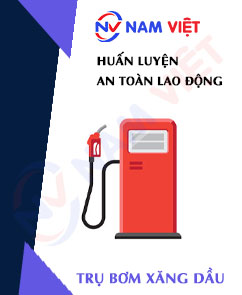
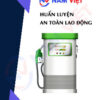
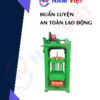







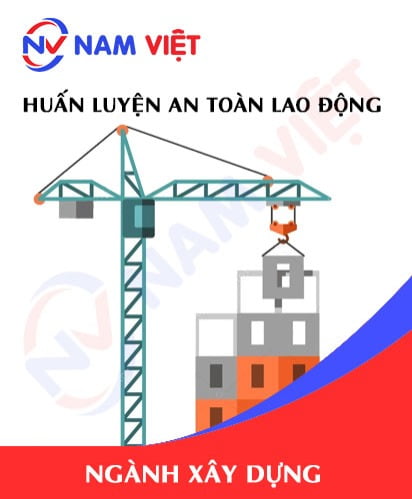
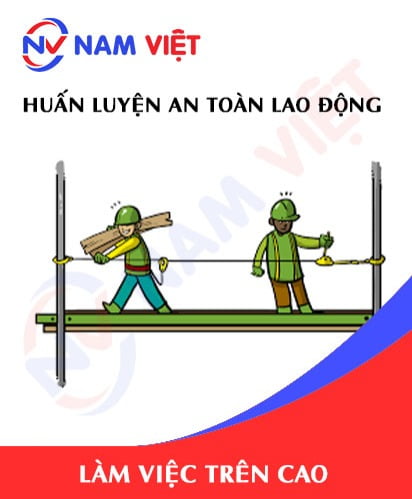


phanminhhang341
The lecturer teaches very lively and easy to understand!